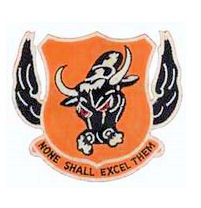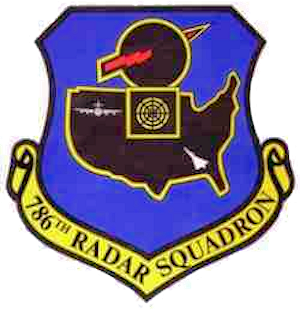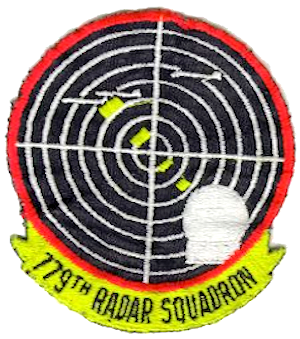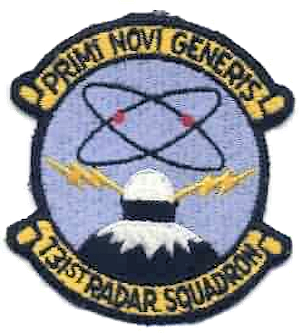|
Minot Air Defense Sector
The Minot Air Defense Sector (MADS) is an inactive United States Air Force organization. Its last assignment was with the Air Defense Command 29th Air Division, being stationed at Minot Air Force Base, North Dakota. It was inactivated on 1 December 1963 History Established in April 1959 assuming control of former ADC Western Air Defense Force 27th Air Division units in western North Dakota and eastern Montana. The organization provided command and control over several aircraft and radar squadrons. The sector operated a SAGE Air-Defense Control Center (ADCC) (DC-19). A SAGE Direction Center built, and an AN/FSQ-7 direction computers operated the live air picture. The Combat Control Center or CC and its accompanying An/FSQ - 8 computer were never installed or activated. The SAGE DC was consolidated with the Grand Forks Air Defense Sector on 1 March 1963, and inactivated on 1 December 1963. Lineage * Established as Minot Air Defense Sector on 1 April 1959 : Inactivated on 1 ... [...More Info...] [...Related Items...] OR: [Wikipedia] [Google] [Baidu] |
Air Defense Command
Aerospace Defense Command was a major command (military formation), command of the United States Air Force, responsible for continental air defense. It was activated in 1968 and disbanded in 1980. Its predecessor, Air Defense Command, was established in 1946, briefly inactivated in 1950, reactivated in 1951, and then redesignated ''Aerospace'' rather than ''Air'' in 1968. Its mission was to provide air defense of the Continental United States (CONUS). It directly controlled all active measures, and was tasked to coordinate all passive means of air defense. Air defense during World War II Continental United States air defense forces during World War II were initially under the command of the four air districts – Northeast Air District, Northwest Air District, Southeast Air District, and Southwest Air District. The air districts were established on 16 January 1941, before the Pearl Harbor attack. The four air districts also handled USAAF combat training with the Army Ground F ... [...More Info...] [...Related Items...] OR: [Wikipedia] [Google] [Baidu] |
13th Fighter-Interceptor Squadron
The 13th Fighter-Interceptor Squadron is an inactive United States Air Force unit. Its last assignment was with the Minot Air Defense Sector, stationed at Glasgow Air Force Base, Montana where it was inactivated on 30 June 1968. The squadron was first activated in January 1941 as the 13th Pursuit Squadron As the 13th Fighter Squadron it participated in the air defense of the Panama Canal from 1941 until 1943 when it returned to the United States and became a training unit until it was disbanded in 1944. History World War II It was activated in early 1941 as the 13th Pursuit Squadron (Interceptor) and assigned to the Southeast Air District. It was equipped with a series of pursuit aircraft with a mission of air defense of Florida. After the Pearl Harbor Attack, the squadron was one of several hastily deployed to the Panama Canal Zone for the defense of the canal with the United States entry into World War II. It was deployed on 2 January 1942 and stationed at Howard Field ope ... [...More Info...] [...Related Items...] OR: [Wikipedia] [Google] [Baidu] |
902d Radar Squadron
9 (nine) is the natural number following and preceding . Evolution of the Arabic digit In the beginning, various Indians wrote a digit 9 similar in shape to the modern closing question mark without the bottom dot. The Kshatrapa, Andhra and Gupta started curving the bottom vertical line coming up with a -look-alike. The Nagari continued the bottom stroke to make a circle and enclose the 3-look-alike, in much the same way that the sign @ encircles a lowercase ''a''. As time went on, the enclosing circle became bigger and its line continued beyond the circle downwards, as the 3-look-alike became smaller. Soon, all that was left of the 3-look-alike was a squiggle. The Arabs simply connected that squiggle to the downward stroke at the middle and subsequent European change was purely cosmetic. While the shape of the glyph for the digit 9 has an ascender in most modern typefaces, in typefaces with text figures the character usually has a descender, as, for example, in . The mod ... [...More Info...] [...Related Items...] OR: [Wikipedia] [Google] [Baidu] |
Minot AFS
Minot Air Force Station (ADC ID: P-28 NORAD ID: Z-28) ermanent Installation Number (PIN): 1445; Installation Location Code (ILC): QJVM is a closed United States Air Force General Surveillance Radar station. It is located south of Minot, North Dakota; on the west side of US Highway 83. It was closed in 1979. A portion of the property was reopened in 1984 as the Minot Communications Site and served until 1997. Minot Air Force Station was the first major Air Force installation in North Dakota, even predating the two "large" bases, Minot Air Force Base and Grand Forks Air Force Base. History Minot Air Force Station was part of the last batch of twenty-three radar stations constructed as part of the Air Defense Command permanent network. It was activated on 20 May 1951 at Max, ND, and declared completely operational in 1952. The 786th Aircraft Control and Warning Squadron began operations with AN/FPS-3 and AN/FPS-5 radars in April 1952, and initially the station function ... [...More Info...] [...Related Items...] OR: [Wikipedia] [Google] [Baidu] |
Fortuna AFS
Fortuna Air Force Station is a closed United States Air Force General Surveillance Radar station. It is located west of Fortuna, North Dakota. It was closed in 1979 as a radar station, remaining as a Long-Range Radar (LRR) facility until 1984. Fortuna Air Force Station was part of the last batch of twenty-three radar stations constructed as part of the Air Defense Command permanent network. It was activated in April, and declared completely operational in late 1952. History The 780th Aircraft Control and Warning Squadron (AC&W Sq) began operations using AN/FPS-3 search and AN/FPS-4 height-finder radars, and initially the station functioned as a Ground-control intercept (GCI) and warning station. As a GCI station, the squadron's role was to guide interceptor aircraft toward unidentified intruders picked up on the unit's radar scopes. During 1957 an AN/GPS-3 search radar made a brief appearance. Reportedly, an AN/TPS-10D was also briefly used. In 1958 the 780th began ope ... [...More Info...] [...Related Items...] OR: [Wikipedia] [Google] [Baidu] |
780th Radar Squadron
{{Numberdis ...
78 may refer to: * 78 (number) * one of the years 78 BC, AD 78, 1978, 2078 * 78 RPM phonograph (gramophone) record * The 78, a proposed urban development in Chicago, Illinois, US See also * * List of highways numbered 78 The following highways are numbered 78: International * Asian Highway 78 * European route E78 Australia * Waterfall Way- New South Wales State Route B78 China * G78 Expressway Iran * Road 78 Korea, South * Gukjido 78 New Zealand * New Z ... [...More Info...] [...Related Items...] OR: [Wikipedia] [Google] [Baidu] |
Opheim AFS
Opheim Air Force Station (ADC ID: P-26, NORAD ID: Z-26) is a closed United States Air Force General Surveillance Radar station. It is located west of Opheim, Montana. It was closed in 1979. History In late 1951 Air Defense Command selected Opheim, Montana as one of twenty-eight radar stations built as part of the second segment of the permanent radar surveillance network. Prompted by the start of the Korean War, on July 11, 1950, the Secretary of the Air Force asked the Secretary of Defense for approval to expedite construction of the second segment of the permanent network. Receiving the Defense Secretary's approval on July 21, the Air Force directed the Corps of Engineers to proceed with construction. On 1 March 1951 the 779th Aircraft Control and Warning Squadron was activated at Opheim AFS with AN/FPS-3 and AN/FPS-4 radars, and initially the station functioned as a Ground-Control Intercept (GCI) and warning station. As a GCI station, the squadron's role was to guide int ... [...More Info...] [...Related Items...] OR: [Wikipedia] [Google] [Baidu] |
Ellsworth AFB
Ellsworth Air Force Base (AFB) is a United States Air Force base located about northeast of Rapid City, South Dakota, just north of the town of Box Elder, South Dakota, Box Elder. The host unit at Ellsworth is the 28th Bomb Wing (28 BW). Assigned to the Global Strike Command's Eighth Air Force, the 28 BW is one of the Air Force's two B-1B Lancer wings, along with the 7th Bomb Wing at Dyess AFB, Texas). In 2017, the 28th Bomb Wing was commanded by Colonel John Edwards; its command chief master sergeant was Chief Master Sergeant Adam Vizi. Ellsworth has a population of about 8,000 military members, family members and civilian employees. Rapid City itself has a population of just more than 62,500. There are about 3,800 military retirees in western South Dakota. For decades, Ellsworth's main entrance included a symbolic B-52 Stratofortress, a gift from the citizens of Rapid City. This entrance has recently been replaced. An expansion of a bomber training area encompassing the No ... [...More Info...] [...Related Items...] OR: [Wikipedia] [Google] [Baidu] |
740th Aircraft Control And Warning Squadron
The 740th Aircraft Control and Warning Squadron AKA 740th AC&W Squadron is an inactive United States Air Force unit. It was last assigned to the, Air Defense Command, 29th Air Division, Great Falls Montana, stationed at Ellsworth Air Force Base, South Dakota. It was discontinued on 15 August 1962. The unit was a General Surveillance Radar and Ground Control Intercept (GCI)squadron providing for the air defense of the United States. Its call sign was Rollerskate and was the primary controller site for the 54th Fighter Interceptor Squadron (FIS), call sign Campaign. Rollerskate controllers guided three different Air Force fighters during intercepts while in operation. The F-84G Thunderjet, 1953–1954, F-86D Sabre Interceptor, (the Dog) 1954–1957 and the F-89J Scorpion, 1957–1960. Rollerskate operated MPS-7 Search Radar and MPS-14 Height Finder Radar. Rollerskate intercept controllers were distinguished for being the first GCI site to successfully intercept and technically shoo ... [...More Info...] [...Related Items...] OR: [Wikipedia] [Google] [Baidu] |
Sundance AFS
Sundance Air Force Station (ADC ID: TM-201, NORAD ID: Z-201) is a closed United States Air Force General Surveillance Radar station. It is located 6.3 miles northwest of Sundance, Wyoming. It was closed in 1968. History Sundance Air Force Station came into existence as part of Phase III of the Air Defense Command Mobile Radar program. On October 20, 1953 ADC requested a third phase of twenty-five radar sites be constructed. The station became operational with the activation of the 731st Radar Squadron (SAGE) on 1 December 1960, feeding data to DC-19 at Minot AFB, North Dakota. Operational status was delayed at Sundance AFS to allow testing to determine if atomic energy could be used to produce sufficient power to operate a radar station. A Portable Medium 1 (PM-1) transportable nuclear power plant developed by the US Army Nuclear Power Program was designed and installed on the site. The tests succeeded, and the site became operational in 1962 with the activation of AN/FP ... [...More Info...] [...Related Items...] OR: [Wikipedia] [Google] [Baidu] |




